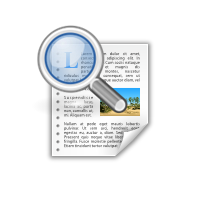
The CRAP Test (Currency, Reliability, Authority, Purpose) is an acronym that represents criteria that can be used in evaluating websites. Web domain names can also provide additional clues to the credibility of sources.
Remember, these questions are guidelines for determining the credibility and usefulness of a source. Some criteria may not be applicable to your source. Even if an article doesn't meet all criteria, it may still be credible and useful - for example, a journal article may have been published years ago but still provide the most relevant information for your research.
Currency
When was the article published? Is your topic in a rapidly changing area of study or discipline?
Having the most up-to-date information is particularly important if your research topic is health, science, or technology-related. However, date of publication may not be as critical when researching history or fine arts. Ultimately, you must make this decision based upon your research needs.
Have newer articles been published on this topic?
Your search may bring you the most relevant articles on your topic rather than the most up-to-date. Conduct thorough research and don't rely on the first source you find.
Reliability
Does the information creator provide references or sources for data or quotations?
The credibility of a resource is greatly enhanced if the author provides evidence of where they're getting their source information. This evidence can be cited as a footnote, or listed in a bibliography or list of resources, which is typically found at the end of an article.
Is the information accurate? Can you independently verify the accuracy of the information from another source?
To determine if the information is accurate, do an online search or consult a reference resource such as an encyclopedia to verify the accuracy of the information. Encyclopedias and other reference works are available through the Library's databases and print collection. Note: Multiple websites might post the same information using your original website as the source. Try to locate an independent, third-party website, database or print resource that corroborates the information listed in the article or website that you're citing.
Was the information reviewed by editors or subject editors before it was published?
If a journal is "peer-reviewed" or "refereed" that means that the articles have been evaluated by one ore more experts in that field. Most peer-reviewed journals are scholarly, but not all scholarly journals are peer-reviewed.
Authority
Who is the author or creator?
The name of the author or party responsible for the information is usually located near the title of the article (byline) or near the bottom of the webpage. Occasionally the article or website will not list the name of the author, but rather the organization responsible for producing the information.
What are the author’s credentials? Are they an expert in the field, or, a journalist from a reputable publication?
The author's credentials indicate if the person has had the necessary training to offer an expert opinion on the topic. For example, research conducted by professors, teachers, those who hold advanced degrees and other professionals who work in the field of study are generally considered to be credible. Although not necessarily experts in a particular field, journalists who work for major news outlets may also be considered credible.
To learn more about an author or organization, do an online search of the name in quotation marks. For example, in doing a search for "Jill Lepore" you will find that she is a Professor of American History at Harvard University. This is the first result from the search. Since the website's domain name (the ".edu" part) is from an educational organization, the odds that the website is legitimate are very high. For more information on Domain Names, see below.
Who is the publisher?
Do an online search for the name of the publisher or sponsor of the publication using quotations. For example, doing a search for the "Plastics Industry Trade Association" will take you to the Society of the Plastics Industry: SPI, whose purpose is to promote growth in the U.S. plastics industry. While this is a reputable organization, it does have a vested interest in promoting specific commercial activities. Be alert for motives and biases, particularly for information coming from .COM, .NET and .ORG websites. For more information on Domain Names, click here
Purpose/Point of View
Is the resource based on facts or opinions?
Resources that use facts that are supported by evidence cited in the work are generally considered to be more credible than opinion-based resources. However, depending on your project, opinion pieces can be useful.
If the resource is opinion-based, is it balanced? Are multiple perspectives presented?
As the old saying goes, there are two sides to every story. A well-balanced resource will include multiple perspectives, offering arguments and counter-arguments.
Is the resource biased? Is the author trying to sway your opinion?
Most resources will have a bias. Biases can be "direct", meaning that the bias is clearly stated as a way to persuade the reader to agree with their position. Biases can also be "indirect," by including information that supports their position, and excluding information that does not support the position. It is important to try to identify the author's position so you can use this information in an informed manner.
Is the creator/author trying to sell you something?
There is no shortage of commercial interests trying to sell their wares on the Internet. Sometimes marketeers will cloak sales pitches in the form of a story, essay or news article.